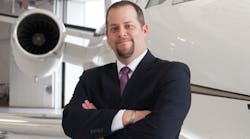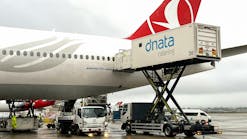Ground Operations Continue to Evolve with Aviation
Let’s dive into “ground handling best practices” and how they will evolve in the future.
First, let’s look at the history. Aviation started in bicycle shops, garages and factories. The military was intrigued by the possibilities of flight applications to give their side an advantage. When Orville and Wilbur Wright and other pioneers finally made all the theory a reality, the commercial visionaries took over with far seeing futuristic plans, not strictly in military applications, but also for the transport of passengers and cargo.
Once the aircraft were developed to fly for extended miles and armed with lucrative government mail contracts, commercial flights for both passenger and cargo became an economic reality. Certified pilot training, flight safety regulations and aerodrome operating procedures were required. Perhaps most important for this publication’s readers, commercially viable ground support became a reality.
Aerodromes were redesigned as airports in large population centers. Self-handling by commercial carriers was the norm, complemented by third-party companies in many locations where multiple competing airlines coexisted.
In this environment, ground handling, FBO, MRO and fueling operations began to increase.
Governments strictly enforced limitations on the airline route competition and saw a need to control aviation operating and safety practices. This regulated environment curtailed airline competition, providing a golden age for cashflow and profitability.
Unfortunately, these policies created near monopoly situations where demand exceeded capacity.
In the late 1970’s flight safety was well established, lessening the need for tight government control. Public demand for more competition and cheaper fares led to deregulation in the industry in North America, and ultimately in Europe and beyond.
Under deregulation, new carriers proliferated and the growth in air travel was unprecedented. Along with increased flight options, competition and lower fares came a reduction in profit margins and an increase in bankruptcies. The need to control costs became paramount.
The three largest operating costs faced by an airline were fuel, airport fees and labor. Fuel costs could not be controlled as the oil companies and distributors set the pricing and were not disposed to lower their margins.
Negotiations between airlines and airports began in earnest to reduce fees. Unfortunately, the rapid increase in air traffic meant the need for more airport infrastructure and costs in most cases increased.
The last opportunity for savings for the carriers was the cost of labor reflected through ground handling pricing.
Airlines actively invited multiple handlers to compete for their handling to lower the cost of ground support operations. Labor relations suffered as ground service companies and unions were pitted against one another. The companies ultimately prevailed in lowering wages and benefits while increasing productivity to stay alive, but the price in too many instances was a toxic work environment.
Many employees found better paying industries and left. Cheap labor was readily available. Additionally, the terrorist attacks of September 11 brought increased background checks, which created a labor shortage and a decline in service levels.
Airlines further reduced their costs, by passing training expenses on to the ground service provider and extending billing and payment terms.
Ramp personnel and ground equipment mechanics were particularly hard hit as ground support companies reduced the size of the work teams, preventative maintenance checks and classroom training to compensate for the airline downloading.
The industry collectively faces increasing environmental regulations on ground equipment carbon emissions. The move to electric equipment is inevitable, creating initial financing and cashflow challenges for the service provider.
There is a silver lining as the cost of operating and maintaining this equipment is far less than the gas/diesel equipment. Autonomous self-driving vehicles also has strong future potential to reduce labor costs.
How the service provider prepares for and embraces these changes will be the difference of economic success or failure.
Each airport has the power to ensure competition between ground handlers, which is controlled and based on realistic, enforceable service level agreements through handling licenses. This will reduce dangerous cutthroat competition and ensure safer, better service standards.
Governments are increasingly legislating living wage provisions. This will initially create difficult financial challenges, but ultimately will lead to the return and retention of the best employees and thereby improving productivity, service and safety standards, which will contribute to positive financial results.
Securing strong labor harmony and supply is critical to success.
Moving forward, ground handlers need to develop “Revenue Science” thinking to fanatically find and fix the chaos and eliminate expensive wasteful practices to secure cost savings - in productivity, duplication, equipment repair, insurance premiums, worker compensation fees and improved safety and service performance.
How ground service providers can best engage these changes, improve current revenue performance and discover new revenue streams, will remain the topic of future ground handling conversations






